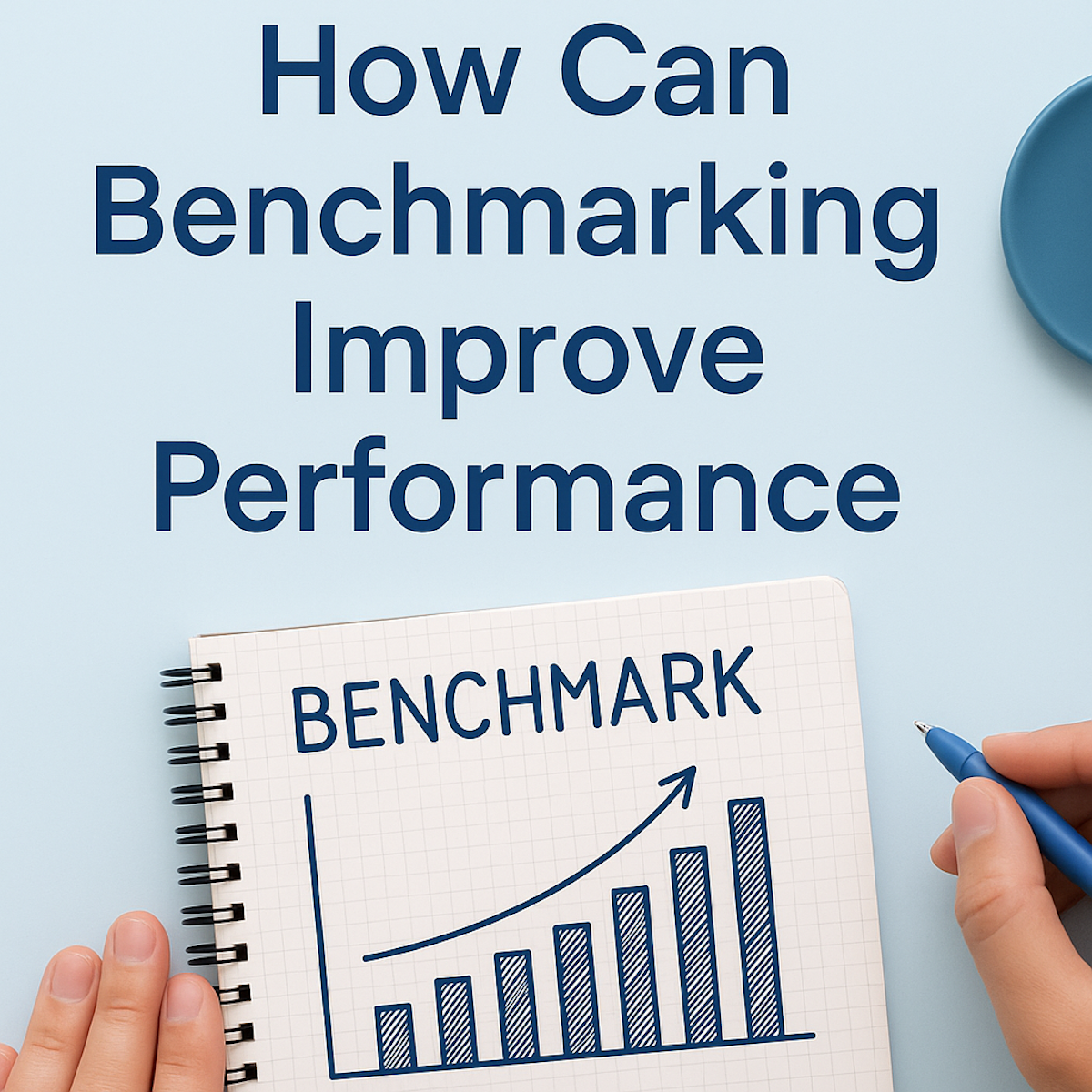In an increasingly competitive business landscape, companies cannot afford complacency. Whether you manage a small firm or head a global enterprise, understanding how benchmarking can improve performance is critical to sustaining growth. Benchmarking helps organizations identify performance gaps, adopt best practices from industry leaders, and set realistic goals. This comprehensive guide explores what benchmarking is, its various forms, real-world examples where it has driven measurable improvements, and practical steps to implement a robust benchmarking program.
What Is Benchmarking?
Benchmarking is a structured process of comparing an organization’s processes, products, or performance metrics against peers or industry best practices. According to the ActivTrak blog, benchmarking aims to translate data into actionable insights for continuous improvement. In essence, it enables companies to measure their operations against a standard and identify where they lag, where they lead, and where they need improvement.
Benchmarking is not simply copying another company’s strategy. Rather, it’s a strategic learning exercise. It involves understanding why certain processes or performance metrics outperform others and then adapting those insights to your organization’s context. A report from World Economic Magazine notes that benchmarking involves comparing business processes and performance metrics to industry standards or best practices to identify gaps and set goals for improvement. By doing so, companies can develop targeted strategies to close performance gaps, improve efficiency, and gain a competitive edge.
Types of Benchmarking
Benchmarking comes in several varieties, each suited to different objectives. Understanding these types helps leaders choose the approach that best fits their needs.
Internal Benchmarking
Internal benchmarking compares performance across different units or teams within the same organization. For example, a retail chain might compare sales and customer service metrics across stores to identify top-performing branches and replicate their successful practices. Internal benchmarking is often easier to conduct because data is readily available, and confidentiality concerns are minimal. It also encourages a culture of continuous improvement by highlighting internal best practices.
External Benchmarking
External benchmarking involves looking outside your organization to evaluate performance relative to competitors or industry leaders. It can be further subdivided:
Competitive Benchmarking compares products or performance metrics against direct competitors. An e‑commerce company might benchmark brand awareness KPIs with a leading competitor to refine marketing strategies . Competitive benchmarking provides insights into what peers are doing better and offers guidance for catching up or differentiating.
Functional or Process Benchmarking focuses on comparing specific functions or processes with organizations outside your industry. For example, an HR department may benchmark its recruitment process against industry standards to streamline hiring. It helps identify best practices that can be adapted regardless of industry.
Generic or Best-in-Class Benchmarking seeks out the best performers across industries. A marketing team might benchmark its conversion and churn rates against a top agency’s metrics to improve client satisfaction. The goal is to learn from innovators and apply those insights to your own context.
Performance Benchmarking
Performance benchmarking compares key performance indicators (KPIs) to identify gaps in productivity or efficiency. As ActivTrak explains, performance benchmarking uses KPIs to measure performance and identify strengths or weaknesses. By examining metrics such as revenue per employee, customer satisfaction scores, or machine downtime, organizations can pinpoint areas where they lag behind peers and prioritize improvement efforts.
Process Benchmarking
Process benchmarking goes beyond metrics to examine the processes, people, and technology behind them. It analyzes how tasks are performed and identifies best practices for execution. ActivTrak emphasizes that process benchmarking compares processes to understand factors like the efficiency of workflows, the technology used, and the skillsets of employees. Through process benchmarking, companies can identify bottlenecks, eliminate redundancies, and standardize procedures for greater efficiency.

Benefits of Benchmarking
Improves Efficiency and Productivity
Benchmarking enables organizations to identify wasteful processes, streamline operations, and improve productivity. The ActivTrak article notes that by comparing internal processes and metrics to best practices, companies can uncover inefficiencies and make targeted improvements. For instance, if a production line’s downtime is higher than industry benchmarks, analyzing the underlying causes may reveal maintenance practices, training gaps, or equipment issues that need attention.
Enhances Work Quality
Benchmarking also improves the quality of products or services. By assessing how quality levels compare with competitors or industry leaders, organizations can identify where they fall short and raise their standards. According to the same source, evaluating performance against standards helps businesses maintain or enhance work quality.
Builds Competitive Advantage
Understanding your competitors’ strengths and weaknesses helps you shape strategies that differentiate your brand. World Economic Magazine highlights that benchmarking drives continuous improvement and enhances competitiveness by enabling companies to learn from leading organizations. This knowledge can inform strategic decisions—such as adopting new technologies, restructuring processes, or shifting market positioning—that strengthen your competitive edge.
Reduces Costs
By uncovering inefficiencies and redundancies, benchmarking can lead to significant cost reductions. ActivTrak notes that identifying wasteful processes and eliminating redundancies can reduce expenses and improve profit margins. For example, if a supply chain study reveals that a competitor uses fewer suppliers but gets better prices, a company might consolidate suppliers to achieve economies of scale.
Sets Realistic Goals
Benchmarking establishes performance baselines and helps organizations set realistic, data-driven goals. This prevents teams from aiming too low or setting unrealistic targets. The World Economic Magazine article explains that benchmarking helps identify gaps and set goals for improvement. By understanding where competitors stand, you can calibrate your own objectives and ensure they are both ambitious and attainable.
Drives Innovation and Growth
Benchmarking exposes organizations to innovative practices and technologies used by industry leaders. The ActivTrak article lists “drives innovation and growth” as a key benefit, explaining that benchmarking encourages organizations to adopt new ideas and processes. By learning from the best, companies can leapfrog incremental improvements and make transformative changes.
Motivates Employees
Transparent benchmarking initiatives can motivate employees by showing them where the organization stands and how their efforts contribute to competitive positioning. Seeing how top performers achieve results can inspire teams to work smarter and adopt new practices. The 10EQS article notes that competitive benchmarking can motivate employees by demonstrating where they stand relative to competitors.
How to Implement Benchmarking Effectively
While the concept of benchmarking is straightforward, executing it effectively requires careful planning and a systematic approach. Below is a step-by-step guide synthesized from industry best practices and the sources cited.
1. Identify What to Benchmark
Start by deciding which processes, products, or performance metrics you want to benchmark. The World Economic Magazine article recommends identifying the scope and focus areas before beginning. Choose areas that are critical to customer satisfaction or operational efficiency, such as product quality, cycle time, cost structure, or customer service.
2. Develop a Project Plan and Align Stakeholders
According to the 10EQS framework, it’s essential to develop a plan and align stakeholders at the onset. This includes setting objectives, defining the timeline, and outlining responsibilities. Stakeholder alignment ensures that everyone understands why benchmarking is being done, what the expected outcomes are, and how data will be used.
3. Identify Key Performance Indicators (KPIs)
Select KPIs that accurately reflect performance in the chosen areas. The ActivTrak guide highlights the importance of choosing measurable, relevant KPIs to gauge performance. For example, if you’re benchmarking customer service, you might track first-call resolution rate, average response time, and customer satisfaction scores. For manufacturing, relevant KPIs might include yield rate, defect rate, and throughput time.
4. Select Benchmarking Partners
Choose organizations or internal units against which to benchmark. This could include direct competitors, companies in adjacent industries (functional benchmarking), or internal departments (internal benchmarking). The 10EQS process suggests carefully selecting partners and obtaining their consent or using publicly available data. In the case of competitive benchmarking, you may need to rely on third-party databases or market research if direct collaboration is not possible.
5. Document Internal Processes
Before gathering external data, document your own processes thoroughly. ActivTrak recommends documenting current workflows, practices, and technologies to create a baseline. This makes it easier to compare with external data and identify specific gaps.
6. Gather and Analyze Data
Data collection can involve surveys, interviews, site visits, or secondary research from reports and public data. The 10EQS case studies show that benchmarking often combines qualitative and quantitative data. In the pricing strategy case (discussed later), interviews with industry experts helped the client understand competitors’ pricing strategies. Once collected, analyze the data to identify performance gaps and underlying causes. Statistical analysis, process mapping, and root-cause analysis tools can be helpful.
7. Identify Gaps and Develop Improvement Plans
After analyzing the data, pinpoint where your performance deviates from best practices. World Economic Magazine advises identifying gaps and then developing improvement plans to close them. Prioritize gaps based on impact and feasibility. For each gap, brainstorm solutions—whether it’s adopting new technology, redesigning processes, investing in training, or changing suppliers.
8. Implement and Monitor
Develop a detailed implementation plan with timelines, responsibilities, and performance targets. Then execute the plan and monitor progress. Continuous monitoring ensures that improvements deliver the intended results. According to ActivTrak, benchmarking should be an ongoing cycle; once improvements are made, companies should benchmark again to identify new opportunities.
9. Repeat and Institutionalize Continuous Improvement
Benchmarking is not a one-time exercise. As markets evolve and technologies advance, continuous benchmarking helps organizations stay competitive. Institutionalize benchmarking by integrating it into strategic planning and performance management processes. Encourage departments to regularly compare performance against industry standards and adopt best practices.
Real-World Case Studies: Benchmarking in Action
Xerox’s Turnaround Through Total Quality Management (TQM) and Benchmarking
In the early 1980s, Xerox faced stiff competition from Japanese manufacturers producing high-quality copiers at lower costs. The company had lost nearly half its market share and suffered from high production costs. To regain competitiveness, Xerox launched a Total Quality Management (TQM) initiative that relied heavily on benchmarking.
The TQM program involved comparing Xerox’s manufacturing processes and product quality against industry leaders. This process revealed that Xerox’s production costs were significantly higher than those of Japanese competitors. One major insight from benchmarking was that Xerox’s supplier base was too large and inefficient. By consolidating suppliers and negotiating better terms, the company achieved economies of scale, reduced costs, and improved product quality. Additionally, benchmarking empowered employees by giving them data-driven targets, leading to a culture of continuous improvement. Ultimately, these efforts helped Xerox regain market share and improve financial performance, demonstrating how benchmarking can drive a turnaround.
Pricing Strategy Benchmarking: A 10EQS Case Study
The consulting firm 10EQS documented a case where a client faced rising inflation and needed to refine its pricing strategy. The firm conducted a competitive benchmarking study by interviewing industry experts and analyzing competitors’ pricing structures. The research uncovered insights such as:
Competitors were offering bundled pricing to mitigate the impact of inflation.
Several companies had implemented dynamic pricing models based on demand fluctuations.
Others leveraged volume discounts to retain customers.
Armed with this data, the client developed a more sophisticated pricing strategy that combined bundled products with flexible pricing tiers. This approach helped the client maintain margin while remaining competitive. The case illustrates how competitive benchmarking can lead to tangible improvements in pricing strategies and financial performance.
Digital Marketing Benchmarking for a Spirits Company
In another case, a large spirits producer sought to benchmark its digital marketing efforts against competitors in the whiskey industry. The study analyzed the digital campaigns of four whiskey brands, focusing on social media engagement, content strategies, and audience targeting. Key findings included:
Successful brands used interactive storytelling and educational content to engage consumers.
Influencer collaborations were a common strategy among top performers.
The most engaging campaigns were tailored to specific audience segments, using data analytics to personalize content.
Using these insights, the company refined its digital marketing strategy—investing in interactive content, partnering with influencers, and leveraging data-driven segmentation. The result was increased engagement and a stronger brand presence in the market. This case underscores how benchmarking can improve marketing performance by adopting successful strategies from competitors.
Internal Benchmarking at a Retail Chain
A retail chain with multiple store locations conducted internal benchmarking to improve customer service and sales. By comparing metrics such as conversion rates, average transaction value, and customer satisfaction scores across stores, management identified high-performing branches and analyzed their practices Insights included:
Top-performing stores had invested in employee training that focused on personalized customer interactions.
Successful locations optimized store layouts to improve the shopping experience.
Stores that actively collected customer feedback and acted on it saw higher satisfaction scores.
Management replicated these practices across other locations, leading to an overall increase in sales and improved customer satisfaction. The internal benchmarking exercise not only improved performance but also fostered a culture of knowledge sharing within the organization.
Common Pitfalls and How to Avoid Them
While benchmarking offers many benefits, it is not without risks. Understanding common pitfalls can help you design a more effective program.
Pitfall 1: Superficial Comparisons
Benchmarking that focuses solely on surface-level metrics without analyzing underlying processes can lead to misguided conclusions. For example, comparing revenue alone may not reveal differences in cost structures or customer acquisition strategies. To avoid this, combine performance benchmarking with process analysis to understand how top performers achieve their results.
Pitfall 2: Copying Without Adapting
Copying competitors’ practices without adapting them to your organization’s context can backfire. A strategy that works for a market leader may not suit a smaller company with different resources or customer segments. World Economic Magazine warns that benchmarking requires adapting best practices to fit your organizational context. Always consider your unique capabilities, culture, and strategic objectives when implementing insights from benchmarking.
Pitfall 3: Data Quality and Availability
Accurate benchmarking requires reliable data. However, competitors’ data may be proprietary or unavailable. Moreover, differences in definitions or measurement methods can distort comparisons. To mitigate this risk, use multiple data sources, cross-validate information, and ensure consistency in metrics. Third-party benchmarking databases, industry reports, and market research can complement primary data collection.
Pitfall 4: Overlooking Confidentiality and Ethical Considerations
Sharing detailed process information with competitors can raise confidentiality and ethical concerns. The World Economic Magazine article points out the importance of respecting confidentiality and obtaining consent when sharing data. Establish clear guidelines for data sharing, protect sensitive information, and consider benchmarking with partners in non-competing industries to reduce risks.
Pitfall 5: Viewing Benchmarking as a One-Time Project
Benchmarking should be an ongoing process, not a one-off initiative. Market conditions, technologies, and customer expectations evolve rapidly. Continuous benchmarking ensures that you stay abreast of new developments and keep improving. Build benchmarking into your strategy and performance management systems to sustain gains over the long term.
Best Practices for Successful Benchmarking
Align Benchmarking with Strategic Goals: Ensure that benchmarking focuses on areas critical to your strategic objectives, such as customer experience, operational efficiency, or innovation.
Create Cross-Functional Teams: Involve representatives from different departments to provide diverse perspectives and foster buy-in across the organization.
Use a Mix of Quantitative and Qualitative Data: Combine hard metrics (e.g., cost per unit, customer satisfaction scores) with qualitative insights (e.g., interviews, observations) for a comprehensive picture.
Maintain Transparency and Communication: Share benchmarking results and plans with relevant teams. Transparency builds trust and encourages participation.
Adapt and Customize Practices: Use benchmarking insights as inspiration but tailor them to your organization’s culture, resources, and constraints. Adopt a “fit for purpose” mindset instead of a “copy and paste” approach.
Monitor Progress and Celebrate Successes: Establish clear metrics to evaluate improvements and celebrate milestones to keep teams motivated.
Leverage Technology: Utilize data analytics, dashboards, and performance management software to streamline data collection, analysis, and reporting.
Respect Confidentiality: When benchmarking externally, respect data privacy and confidentiality agreements. Consider working with anonymized data or third-party research firms when direct sharing is not possible.
Final Tips and Takeaways
Benchmarking is a powerful tool for performance improvement when approached thoughtfully. It requires a commitment to data-driven decision-making, a willingness to learn from others, and a culture of continuous improvement. Here are the key takeaways:
Benchmarking is strategic: It is more than a performance comparison; it’s an instrument for learning and growth. By understanding what others do better, organizations can identify gaps and adopt superior practices.
Variety of approaches: Choose the type of benchmarking—internal, competitive, functional, generic, performance, or process—that aligns with your objectives.
Robust process: Follow a systematic approach: identify what to benchmark, align stakeholders, select KPIs, choose partners, collect and analyze data, identify gaps, implement improvements, and repeat.
Real-world impact: Case studies such as Xerox’s turnaround, pricing strategy adjustments, digital marketing successes, and internal retail benchmarking demonstrate tangible benefits. These examples show how benchmarking drives better pricing, marketing, supply chain management, and overall organizational performance mbaknol.com, 10eqs.com, 10eqs.com.
Avoid pitfalls: Watch out for superficial comparisons, blind copying, data limitations, confidentiality issues, and one-time efforts. Embrace adaptation and continuous improvement.
Continuous cycle: Benchmarking is not a one-off project. It should be embedded in your organization’s culture as a continuous cycle of evaluation and improvement.
By following these guidelines and leveraging the insights provided, business leaders can harness benchmarking as a catalyst for performance improvement. Whether you seek to streamline operations, enhance customer satisfaction, or innovate your offerings, benchmarking offers a proven pathway to identify best practices, set realistic goals, and achieve sustainable growth.


